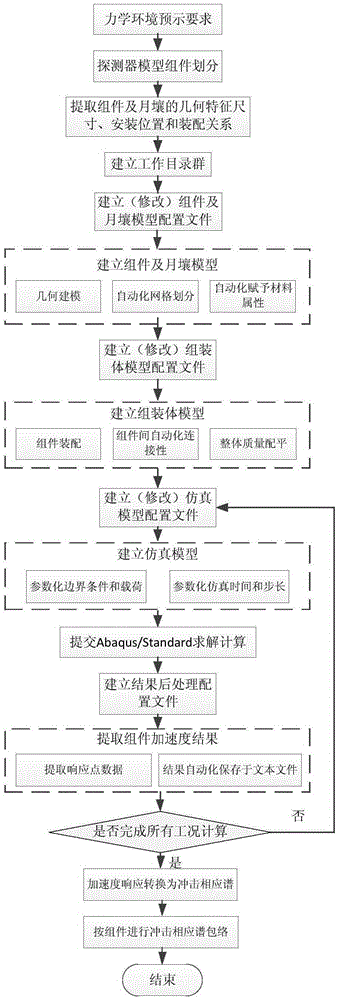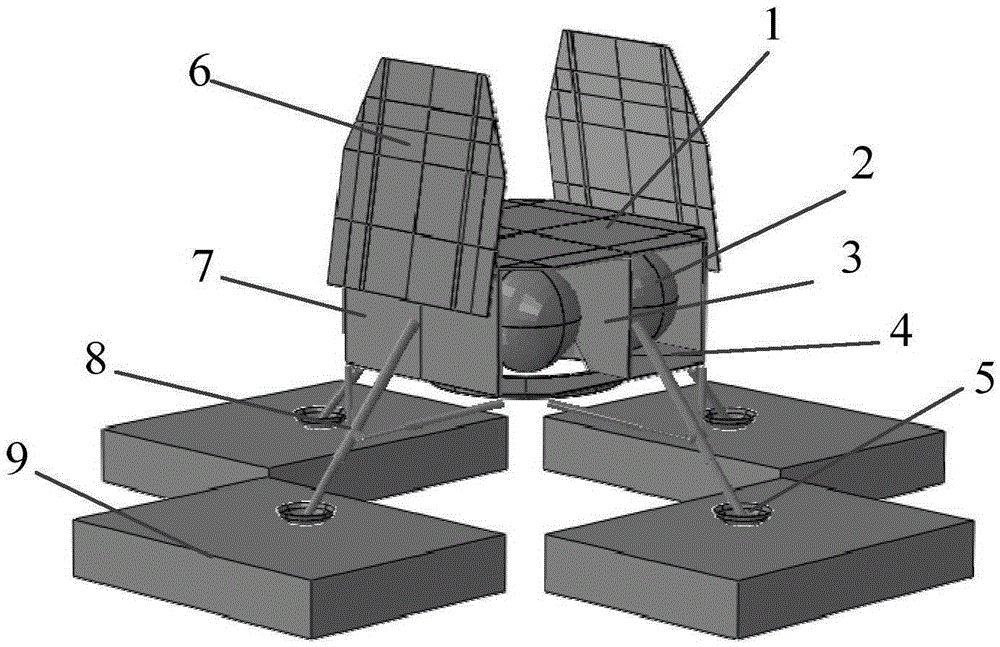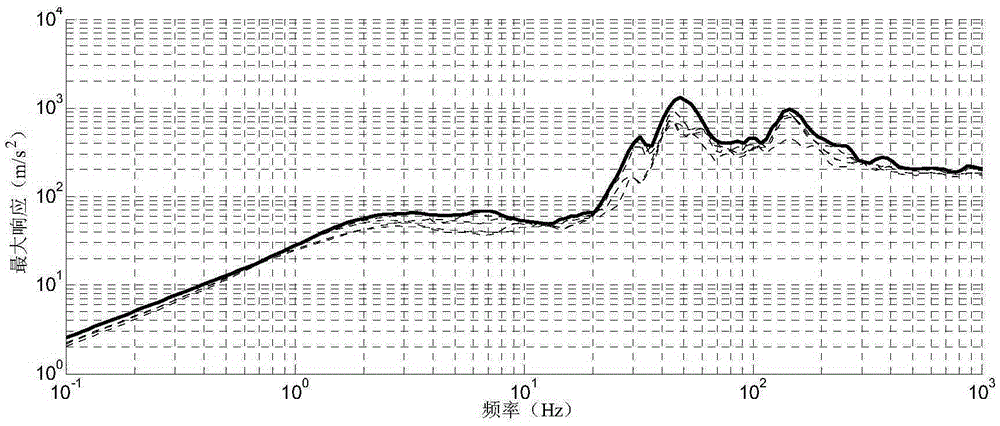Component partitioning simulation method based on lunar probe landing mechanical environment prefiguration
A technology of mechanical environment and simulation method, which is applied in the field of deep space exploration, can solve problems such as confusion and errors in the management of result files, and achieve the effects of improving design and development efficiency, shortening the development cycle, and avoiding confusion in the management of result files
- Summary
- Abstract
- Description
- Claims
- Application Information
AI Technical Summary
Problems solved by technology
Method used
Image
Examples
Embodiment 1
[0036] A simulation method for component division based on the prediction of the mechanical environment of the lunar probe landing, such as figure 1 As shown, the specific steps are as follows:
[0037] Step 1: Divide components according to the predicted requirements of the mechanical environment. Divide the lunar probe into top plate 1, storage tank 2, partition plate 3, bottom plate 4, foot pad 5, solar wing 6, side plate 7, and buffer legs 8, such as figure 2 shown.
[0038] The lunar probe carries a variety of payloads, and the model is very complex, involving a variety of geometric dimensions. The present invention first simplifies the physical model of the lunar probe and divides the components according to the prediction requirements of the mechanical environment: the fundamental purpose of the analysis of the dynamic response of the soft landing of the lunar probe is to obtain the mechanical environment of the payload on the lunar probe, so as to formulate the land...
PUM
 Login to View More
Login to View More Abstract
Description
Claims
Application Information
 Login to View More
Login to View More - R&D
- Intellectual Property
- Life Sciences
- Materials
- Tech Scout
- Unparalleled Data Quality
- Higher Quality Content
- 60% Fewer Hallucinations
Browse by: Latest US Patents, China's latest patents, Technical Efficacy Thesaurus, Application Domain, Technology Topic, Popular Technical Reports.
© 2025 PatSnap. All rights reserved.Legal|Privacy policy|Modern Slavery Act Transparency Statement|Sitemap|About US| Contact US: help@patsnap.com



